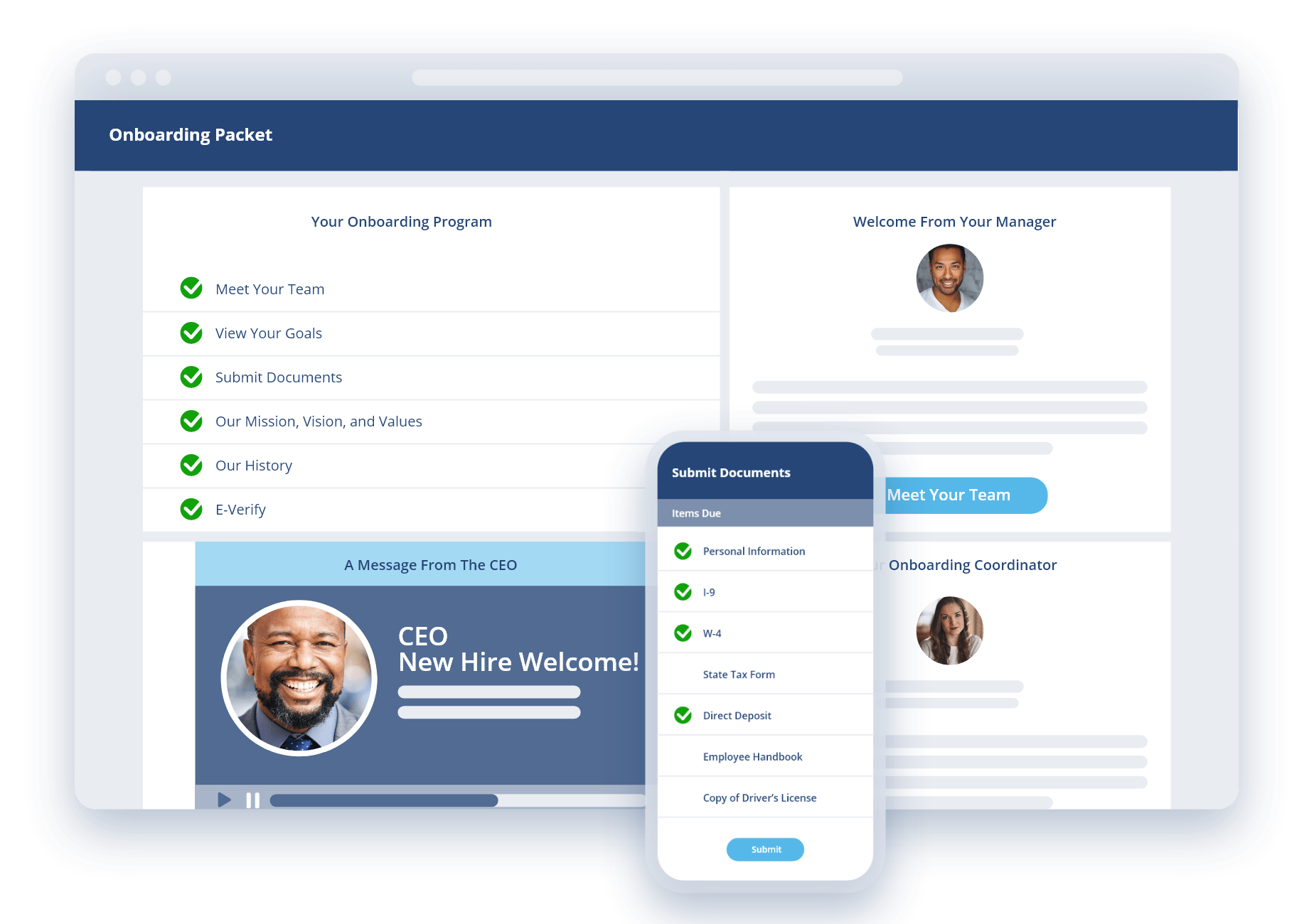Over the past few years, we’ve watched employee engagement drop from record highs to all-time lows. Currently, just 30% of employees are engaged, and 17% are actively disengaged —a 6% decrease and a 3% increase since January 2020, respectively. Since engagement affects employee retention, productivity, and other critical factors of business success, that’s cause for concern in any industry. It’s even more alarming in an industry like healthcare, where employee engagement can be the difference between providing outstanding patient care and making grave mistakes.
For obvious reasons, the pandemic hugely affected engagement and employment in the healthcare industry and continues to do so today. Care work is inherently difficult without the added stress of COVID-19, and the resulting increase in burnout — as high as 70% — pushed many workers out of healthcare and into other industries.
While employment levels have recovered for some professions, skilled nursing and elder care facilities are still struggling to hire. The World Health Organization (WHO) predicted a shortage of 10 million healthcare workers worldwide by 2030, so there’s an urgent need to keep the valuable employees you already have and attract new ones to the industry.
Fortunately, you can turn to research-backed employee engagement strategies to recruit and retain workers and boost engagement at your healthcare facility.
Why You Need Employee Engagement in Healthcare
In healthcare, employee engagement is paramount — more so than in nearly any other work environment. Healthcare professionals are responsible for patient care, and how they feel about their jobs and workplaces impacts both employee satisfaction at your company and the quality of care they provide. Your healthcare staff’s engagement level has a direct impact on the patient experience, including patient safety and outcomes. Healthcare organizations that don’t prioritize engagement have a lot at stake.
Think about how overworked, unsupported, unheard, or otherwise frustrated healthcare staff might operate compared to those who feel supported and valued by their employer. When healthcare staff is not engaged, they’re at higher risk of burnout, more likely to quit, and more prone to making mistakes that can impact patients. There’s proof that engagement leads to improved outcomes — a recent study showed that increasing employee engagement by 10% correlated with a 4% increase in hospital ratings from patients.
More Tips for HR in Healthcare
Get more HR resources for your healthcare organization from ClearCompany:
6 Ways to Engage Healthcare Workers
Though some professions are back to pre-pandemic employment levels, many facilities are still having trouble attracting and retaining skilled healthcare workers. At the same time, the U.S.’s aging population and the passage of the Affordable Care Act in 2012 have created an increased demand for healthcare services, putting even more strain on overworked, understaffed facilities. That’s why it’s more important than ever to improve the employee experience for healthcare workers and increase engagement at your facility.
Dive deeper into six ways your HR team can enhance employee engagement strategies to improve patient care, nurture highly engaged employees, and retain them long-term.
1. Positive Work Environment
The work environment is a vital component of healthcare employee retention and engagement. An unhealthy work environment is one of the top reasons employees choose to leave their roles. More than ever, employees are prioritizing their mental health and overall well-being over their jobs and won’t hesitate to look for a new one if they feel unappreciated or mistreated.
Many of the strategies we discuss in this post help foster positivity in the workplace so you can retain your people and promote employee well-being and job satisfaction. Evaluate these traits of a positive work environment to see what might be affecting engagement for your people specifically so you choose the right strategies to leverage:
- Employees feel a sense of belonging at work.
- Psychological safety means employees feel free to voice their opinions, ask questions, offer ideas, and call attention to problems without fear.
- Employees have ample opportunities to learn and grow.
- Employees get support from their coworkers.
2. Training and Education
The opportunity to grow in their careers is one of the biggest indicators of engagement. That’s why offering professional development opportunities like certifications and continuing education courses is a tried-and-true way to boost healthcare employee engagement. In addition to investing in your current employees’ growth, you can also invest in the next generation of healthcare workers to build an engaged workforce.
As we mentioned, there’s a shortage of care workers coinciding with an increased demand for their services, especially skilled nurses and doctors. In response, the National Governors Association Center for Best Practices (NGA Center) launched a project called the Next Generation of the Healthcare Workforce, in which states worked together to uncover the best ways to bring more people into healthcare professions. The project found that reliable best practices include engaging stakeholders, like educational institutions, and partnering with healthcare employers to build career pathways.
You can help attract and engage new healthcare workers by first looking into your state’s role in the Next Generation project. It might already have an established workforce initiative you can join, like an apprenticeship program, or a task force for creating education and training programs, like California’s Health Workforce Education and Training Council. Get involved by creating your own apprenticeship program or advising the task force on the most in-demand skills to help inform their work.
While you should certainly upskill or reskill your current workforce whenever possible or necessary, investing in the next generation helps establish engagement long before new healthcare workers enter the field.
3. Communication and Transparency
In healthcare, uncertainty is the name of the game, even without the added stressors of worker shortages. Open communication and transparency help create trust, alleviate anxiety around uncertainties, and build the positive work environment required for engagement. Keeping your staff informed advances inclusivity, shows them they’re a valued part of the company, and helps them understand why certain decisions are being made.
Transparent communication also sets clear expectations and promotes accountability, which produces more high-performers and improves overall performance and teamwork. It supports ethical practices and ensures safety by keeping everyone updated on protocols and changes. During times of change, like when new processes or technologies are introduced, clear communication helps secure buy-in from your people for smooth, successful transitions. Effective communication and transparency lead to higher engagement, better patient care, and increased staff retention.
4. Worker Feedback
Getting employees’ feedback — and then acting on it — is an excellent way to increase engagement in and of itself. It also helps you understand if what you’re already doing is working and discover even more ways to engage your healthcare staff. There are three common employee engagement models that center around collecting worker feedback and acting on their responses:
- Gallup’s 12-question engagement survey
- The Kahn Model of Employee Engagement
- The Aon Hewitt Engagement Model
These models measure different aspects of engagement to help you identify what needs to change and what you’re doing well. For example, the Aon Hewitt Model measures engagement according to employees’ desire to stay, stay, and strive:
- Say — Say positive things about the company, their work, and their colleagues
- Stay — Feel they belong and want to be part of the company
- Strive —Are motivated to put in their best effort
If your employees agree that they have great things to say about their workplace, they don’t want to look for a new job, and they’re motivated to do their best, you can consider them to be engaged. You can send out an employee survey to get their feedback, but no matter how you collect it or which model you follow, be sure to take action on their responses. If you don’t, you run the risk of damaging the trust and communication you’ve built, which could have worse effects on engagement than never sending a survey at all.
5. Recognition and Rewards
We know that recognition and rewards for great work are motivating for workers in any industry, and that goes double for healthcare workers. Research from McKinsey found that 75% of nurses who had quit in the previous 18 months say not feeling valued by their employer played a significant role in their decision to leave. Findings also show that recognition was the best way to support nurses’ well-being, and respondents suggested the best ways to do it:
- Simple acknowledgement
- Appreciation of excellence
- Reinforcement through broader workplace culture and support in the field
Healthcare workers deal with complex situations, handle heightened emotions, and make difficult decisions all day long, so recognizing and rewarding excellent work goes a long way to engaging employees. It also contributes to the positive work environment you want to build. One medical center found that one meaningful interaction with a team member per month could reduce turnover by 36%.
6. Employee Engagement Software
We use software in so many aspects of our lives and work — why not in our engagement initiatives? A modern employee engagement solution can help you execute your healthcare organization's engagement strategies effortlessly with features like:
- Pulse Surveys: Quickly gather real-time feedback from employees with a one-question pulse survey to understand the current sentiment of your workforce and address issues.
- Employee Recognition: Enable peer-to-peer recognition and make it easy to determine rewards to boost morale and acknowledge outstanding contributions.
- Employee-Manager One-on-Ones: Discuss and manage employee performance with continuous feedback and performance conversations in weekly one-on-one meetings. With software, you can easily schedule these chats as well as maintain a digital archive of notes, progress, and more.
- Employee Feedback: Send surveys out to your employees to get feedback on various aspects of their work environment. This helps to foster open communication and tells you where you need to improve.
- Analytics and Reporting: With advanced analytics, you can gain insights into healthcare employee engagement levels and identify trends or areas needing attention. You can also keep track of which changes have made an impact — and which ones fell flat.
- Goal Planning and Alignment: Align individual and team goals with the organization’s objectives to ensure everyone is working towards the same vision. Uniting everyone’s goals can even help motivate your people to work harder.
The Engagement Solution for Healthcare
ClearCompany Employee Engagement is the right solution for boosting engagement at your healthcare organization. Remember all those engagement tools we just listed? With ClearCompany, you get access to all those and more.
Experience ClearCompany Employee Engagement in action, tailored to the needs of your healthcare workforce. Sign up for your free demo.



